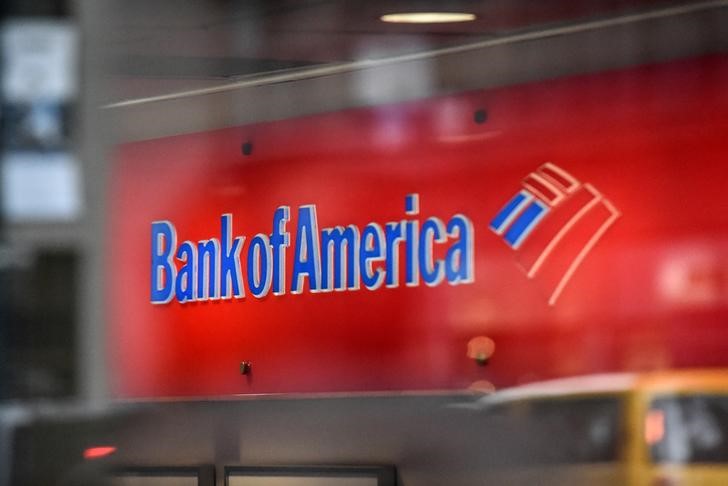By Dan Freed and David Henry
(Reuters) - Big U.S. banks are starting to pay corporations, financial firms and rich people more to hold on to their deposits, but ordinary consumers will have to wait longer to see more than a few pennies for every $100 they stash in their accounts.
Banks including JPMorgan Chase & Co (NYSE:JPM), Bank of America Corp (NYSE:BAC), Wells Fargo (NYSE:WFC) & Co and PNC Financial Services Group (NYSE:PNC) lifted rates for sophisticated customers' deposits during the second quarter, executives said when discussing earnings in recent days.
The increases followed the Federal Reserve's decision in June to lift its key interest rate target for the third time in six months.
Main Street depositors are not yet seeing the same benefits, executives said. Those customers have been slower to move money from deposit accounts into products that would pay more, partly because banks, collectively, are not competing with each other for the funds.
"It is a tale of two cities," JPMorgan Chief Financial Officer Marianne Lake said, in describing how corporate customers were much quicker to demand higher rates.
Bill Demchak, PNC's chief executive officer, characterized corporate deposits as "hot money" ready to move quickly when interest rates first rise. He predicted the Fed would need to hike rates a couple more times before banks would need to compensate retail consumers more.
Several online banks pay rates above 1 percent, but big banks have not budged much since rates fell to near zero during the 2007-2009 financial crisis.
The average U.S. checking account now pays 4 cents of interest each year for every $100 in deposits, according to the Federal Deposit Insurance Corp. Even five-year certificates of deposit pay less than 1 percent.
Consumers will benefit when a few banks start paying higher rates, forcing others to keep up to avoid losing customers, bankers said. Wells Fargo will lift rates only as a "defensive" measure, Chief Financial Officer John Shrewsberry said.
Analysts say how long the banks can hold out on consumers could determine if lenders meet expectations for net interest income.
Bank of America's consumer deposit rate rose by just one-hundredth of a percentage point, but it had to pay wealth management and corporate customers more. Executives said the earnings hit of the higher rates would appear in third-quarter results.

Basic checking accounts "are zero interest and they will remain zero interest because that's the nature of the beast," Bank of America CEO Brian Moynihan said.